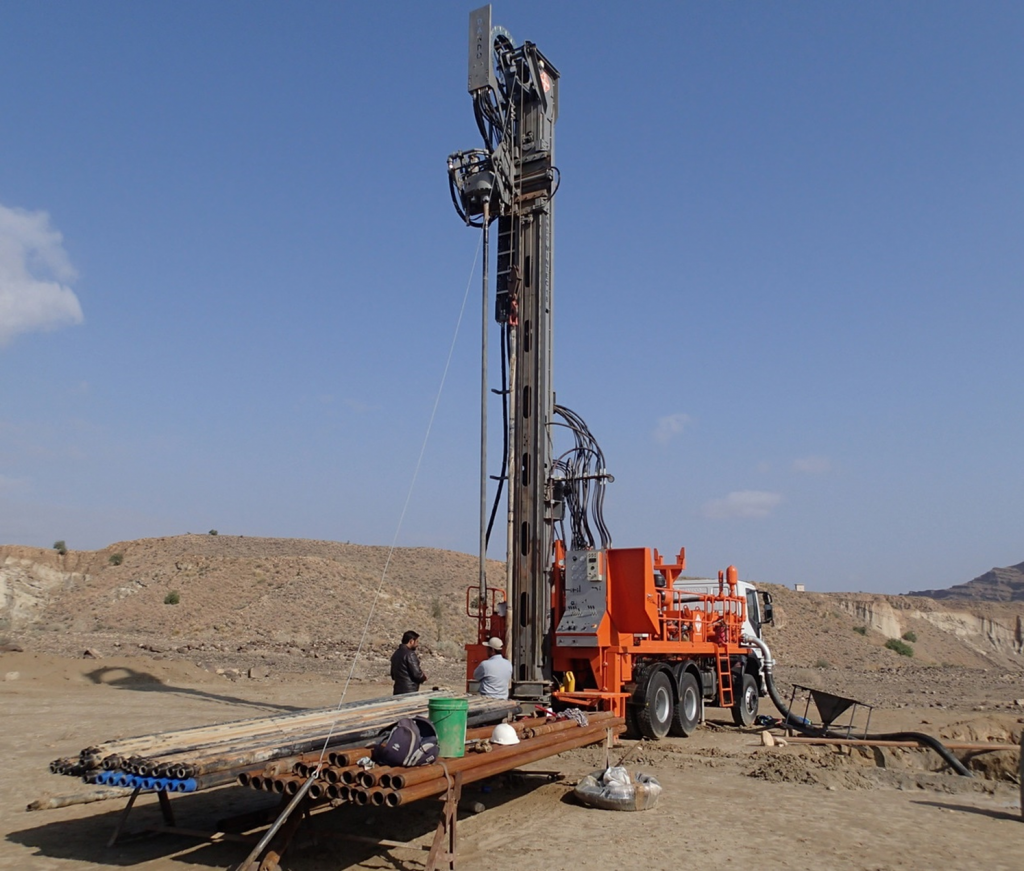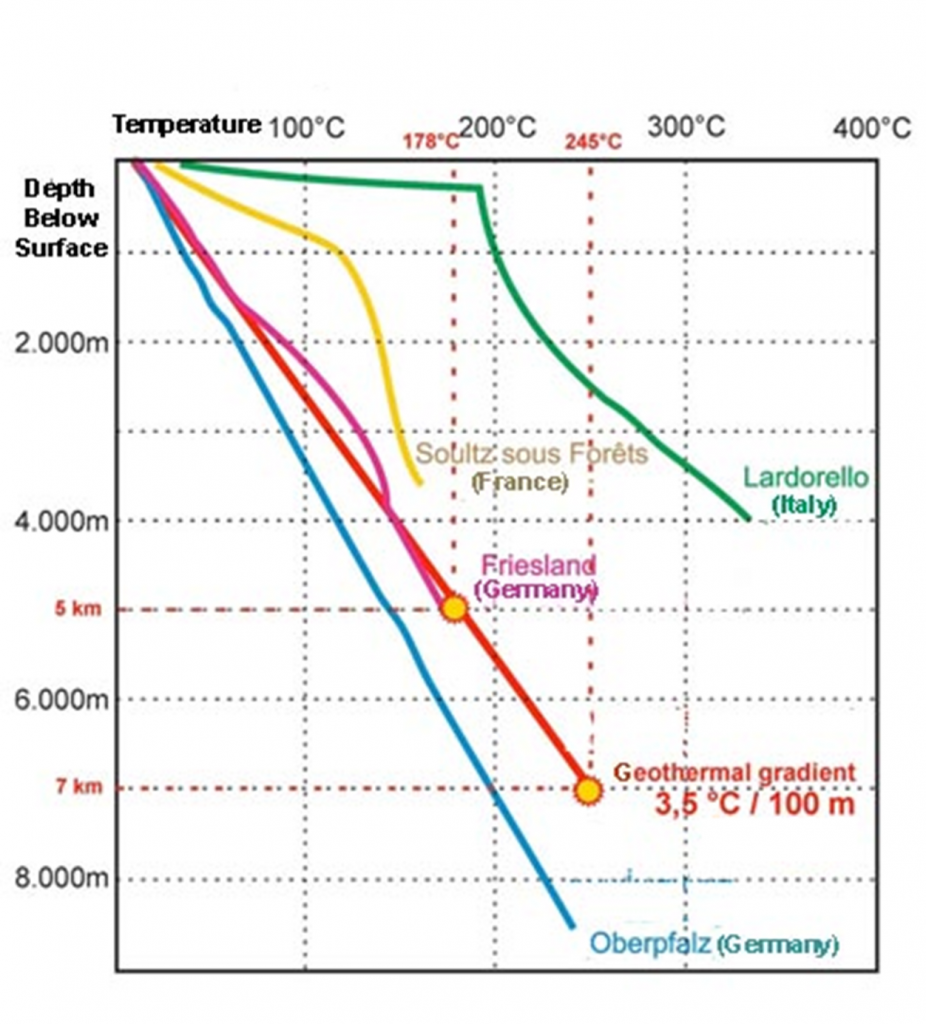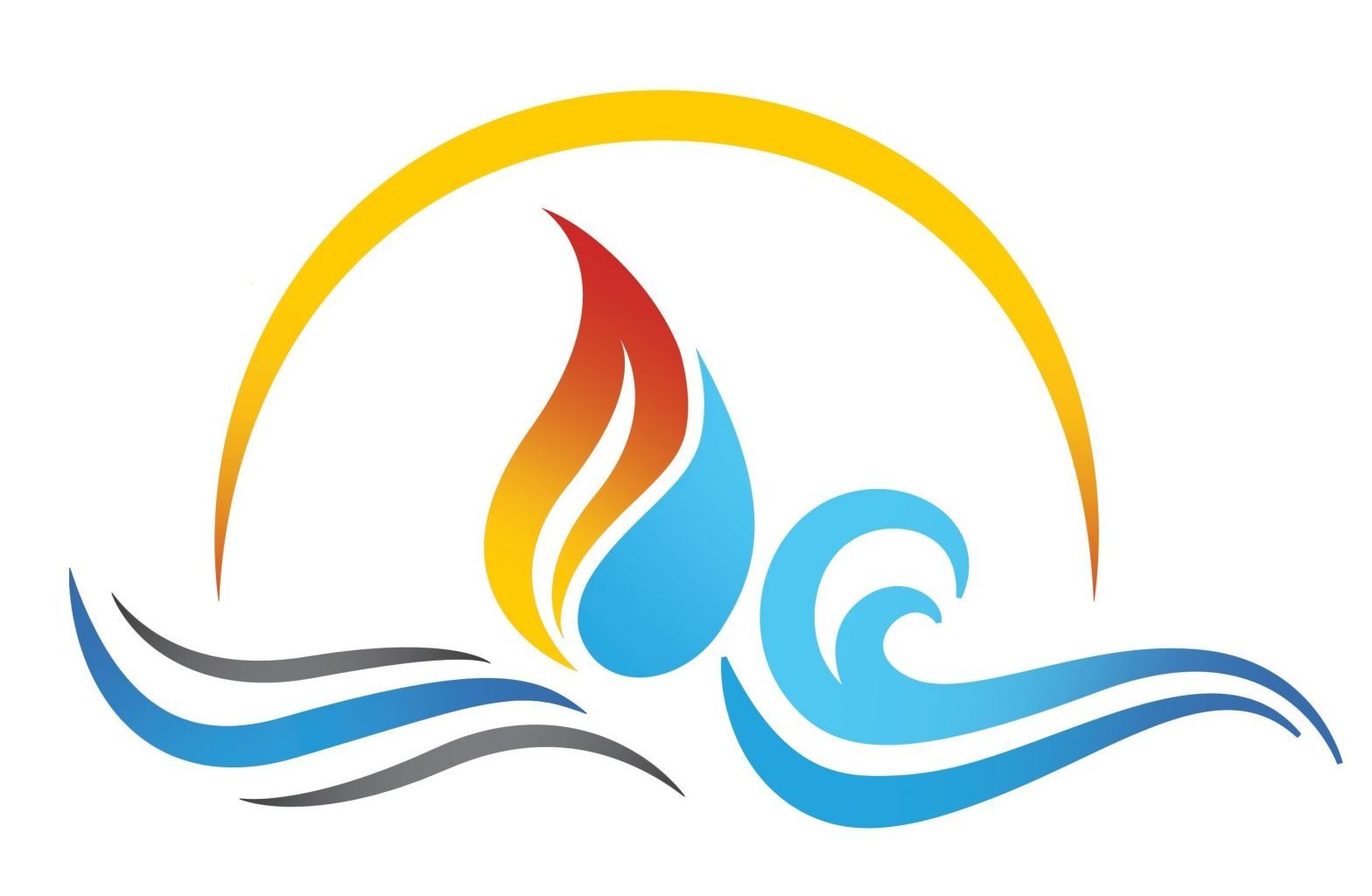After identifying areas where we would like to investigate geothermal temperature gradients, we need to examine the type of rock to see what kind of gradient might be present and how we may obtain this data;
The presence of existing oil & gas wells may provide the necessary information without any more fieldwork;
Sedimentary rock will have geothermal gradients affected by rock lithologies and pressure regimes which can influence the observed gradients. Heat would rise from whatever source (e.g., crustal thinning) and would be transmitted by conduction and convection. Rock properties (e.g., thermal conductivity) and the presence of fluids (or lack thereof) would impact how this heat was transmitted. Some types of seals can affect the migration upwards of fluids as well as heat;
Volcanic, Igneous and metamorphic rock formations may have heat pathways through faults and fractures (high permeability anomalies) that help preferentially feed heat to certain areas. Temperature inversions can result from disequilibria around fractures or permeable horizons where the thermal or flow conditions have changed the heat flux. Proximity to magmatic sources can significantly influence local gradients;
Drilling of these thermal boreholes would typically involve a number of surface locations since the subsurface heat indications might only be able to be recognised in a one kilometre radius (nominal) from each hole. Based on the preceding geophysical work, hopefully the potential locations would have been narrowed down so that around 4-6# boreholes might be required. Mobile, heavy-duty mineral exploration drilling rigs capable of wireline coring, reverse circulation and rotary air blast drilling would typically be used for the depths and rock types anticipated (example at right). Various types of temperature measuring devices exist (as a function of the temperatures encountered) and drilling fluids may affect the results, so some time delay after drilling may be needed and potential correction factors may need to be applied;

The depth of these boreholes is a function of the geology and too shallow of boreholes could miss significant deeper heat resource opportunities. Shallow meteoric aquifers will be cooler and will demonstrate reduced thermal gradients, masking deeper heat resources. In the presence of shallow mineralised hydrothermal reservoirs, it may be possible to drill shallower boreholes, but petrothermal reservoirs will require deeper boreholes to get a better measurement of the thermal gradients. Normal planning involves ~600m deep geothermal boreholes until more is known about the geology.

